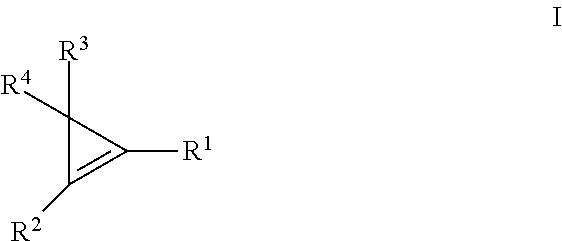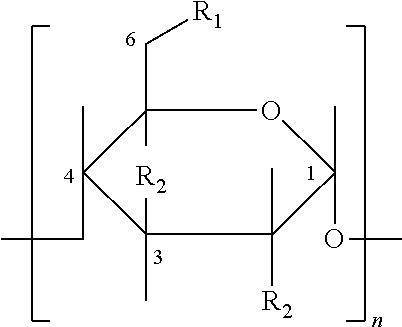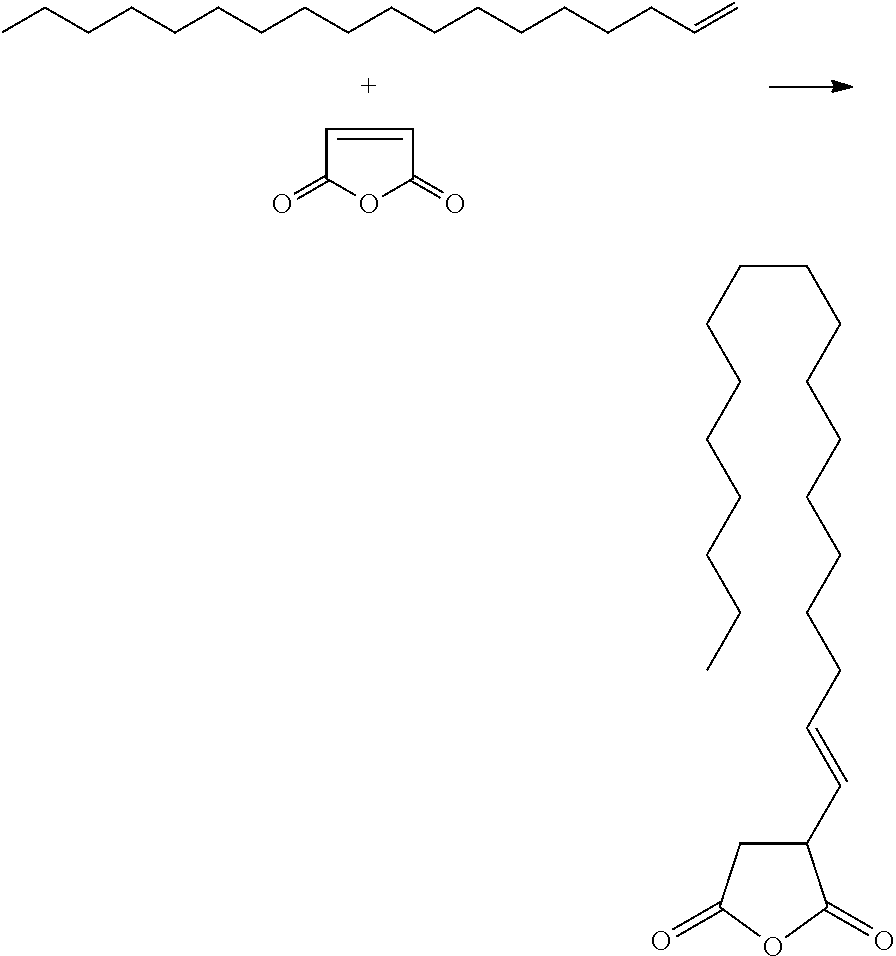Maturation or ripening inhibitor release from polymer, fiber, film, sheet or packaging
a technology of maturation or ripening inhibitor and release mechanism, which is applied in the direction of packaging foodstuffs, containers preventing decay, packaging goods, etc., can solve the problems of reduced shelf life, reduced inhibition, and continuous exposure, and achieves extended useful life time
- Summary
- Abstract
- Description
- Claims
- Application Information
AI Technical Summary
Benefits of technology
Problems solved by technology
Method used
Image
Examples
example 2
Film
Three layer coextruded blown polyethylene film structure—6 mil thickness.
[0072]Outside sealant layers (2 mil each):[0073]2% α-cyclodextrin grafted onto the polyolefin blend (Cavamax W6A lot[0074]60F203 manufactured by Wacker Chemie).[0075]50% Affinity PF1140G manufactured by Dow Plastics.[0076]50% Exact 8852G manufactured by ExxonMobil.
[0077]Core (2 mil): Mobil LGA 105 low density polyethylene
example 1
[0078]
Deionized Water85.75%Airflex ®920 Emulsion (Air Products and9.50%Chemicals, Inc; Allentown, PA18195)Pluronic 31R1 manufactured by BASF.0.75%α-cyclodextrin (Cavamax W6F4.00%manufactured by Wacker Chemie)
Film and Spunbond Fiber Sample Production Procedure
[0079]First sample set: Each of Film example 2 samples and control film example 2 samples were cut into 4″×4″ sheets.
[0080]Second sample set: Spun-bond fiber example 1 samples and control fiber example 1 samples were cut into 8.3″×8.3″ sheets.
[0081]The first set of film was found to have a moisture content of 0.13%. The film was previously stored in a storage room at 20° C. and 50% humidity for greater than 6 weeks.
[0082]The first set of fiber was found to have a moisture content of 0.17%. The fiber was stored in uncontrolled temperature and humidity warehouse space for greater than 6 weeks.
[0083]The second set of samples was placed in a vacuum oven to dry. The vacuum was held at greater than 0.1 mm-Hg for a period of 24 ...
film example 3
Tri-layer, Co-Ex Emil blown film
Outer layers: each layer 2 mil comprising:
2.0% α-cyclodextrin Cavamax W6A lot 60F203 grafted onto the polyolefin blend (Wacker Chemie)
21.5% Integrate NE542-013
38.2% Affinity PF1140G (Dow Plastics)
38.3% Affinity 8852G (Dow Plastics)
[0113]Core: 2 mil Mobil LGA 105 LDPE
Procedure for Extracting 1-MCP Gas and Sample Preparation
The 1-methylcyclopropene (1-MCP) was received in the form of a complex with cyclodextrin powder. The powder was estimated to contain 5 wt % 1-MCP. To extract the 1-MCP, 500 g of the powder was placed in a 3 L Tedlar bag along with a pouch containing 50 mL of D.I. water. The bag was sealed and the lab air was evacuated from it. Once sealed and evacuated, the pouch of water was popped, putting the water in contact with the powder. Gaseous 1-MCP is produced from the CD / 1-MCP complex when exposed to high humidity. After a period of time, the bag filled with 1-MCP gas. 150 mL gaseous 1-MCP was then extracted from the bag via syringe and i...
PUM
| Property | Measurement | Unit |
|---|---|---|
| temperature | aaaaa | aaaaa |
| pressure | aaaaa | aaaaa |
| molar ratio | aaaaa | aaaaa |
Abstract
Description
Claims
Application Information
 Login to View More
Login to View More - R&D
- Intellectual Property
- Life Sciences
- Materials
- Tech Scout
- Unparalleled Data Quality
- Higher Quality Content
- 60% Fewer Hallucinations
Browse by: Latest US Patents, China's latest patents, Technical Efficacy Thesaurus, Application Domain, Technology Topic, Popular Technical Reports.
© 2025 PatSnap. All rights reserved.Legal|Privacy policy|Modern Slavery Act Transparency Statement|Sitemap|About US| Contact US: help@patsnap.com



